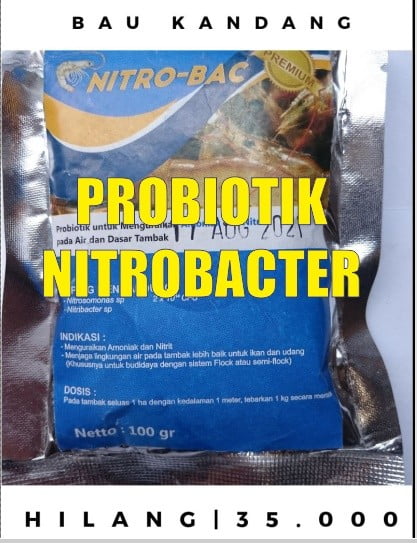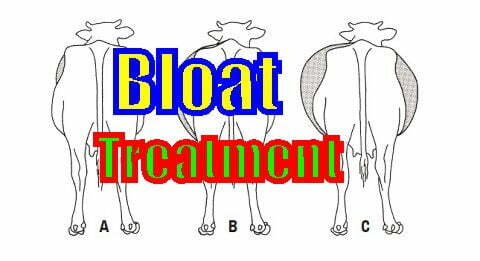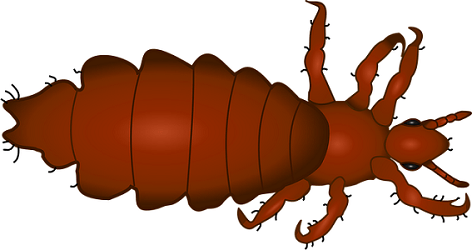Is there a simple way to culture Nitrosomonas and Nitrobacter? For example, we want to make it a probiotic or starter.
If the starter you want to make is not pure, only Nitrosomonas and Nitrobacter, there is a way.
However, if you want to be pure, only Nitrosomonas and Nitrobacter bacteria are present in the culture, as short as I know there is nothing simple.
Need qualified equipment and expertise. The problem is this is the area of microorganisms. It is very prone to contamination by other unwanted organisms.
Culture nitrosomonas and nitrobacter used for
The most basic problem of all livestock activities is waste or manure.
Not only fish but all animals including cows, goats, or sheep as well as quail or laying hens.
Animal manure is a problem because manure contains organic nitrogen which is released by bacteria to form ammonia.
Ammonia (NH3) is a gas that is colorless but has a strong odor.
Smelling or inhaling high concentrations of ammonia can cause immediate dizziness or fainting.
Meanwhile, exposure to ammonia for a long time can irritate the lungs.
It could be. Because ammonia can be like this.
Ammonia is a volatile gas. Boils at a temperature of -33 degrees Celsius. In fact, when livestock manure comes out at room temperature (25-29 degrees), surely the ammonia will immediately spread to the surrounding air.
Besides, ammonia is also corrosive. If the metal causes corrosion while in organic tissue, it can damage.
Not only is it easily dispersed into the air, but ammonia gas can also dissolve well in water. Especially in fish, this is a problem.
The presence of ammonia in a livestock environment is very dangerous. This is why livestock manure must be cleaned every day. Cows, goats, sheep, poultry are mandatory. Whereas in fish, it can take longer to replace the water.
Exposure to ammonia in poultry can lead to CRD disease. Whereas in cows, it can cause infectious diseases in the lungs.
Yes, if the infection is by bacteria. Antibiotics can still work to suppress it.
If there was a virus, the average cow would end forever.
How important is the use of Nitrosomonas and Nitrobacter?
Very important. Especially in the process of ammonia nitrification in livestock manure.
And it should be noted, the Nitrobacter bacteria must pair with the Nitrosomonas bacteria.
Because in the process, the Nitrosomonas goes first. Only the results of the work of Nitrosomonas are cultivated by Nitrobacter.
Both of these bacteria are important but their work is specific. Namely, they both work to convert ammonia to nitrate.
Meanwhile, breaking down organic matter is not their job. Other bacteria are better at it.
So, in my opinion, for complex use, Nitrosomonas and Nitrobacter bacteria are less effective. For example, for composting.
But when it comes to breaking down Ammonia, they are the masters. No bacteria is greater than this.
Its ability to degrade ammonia is thousands of times faster than other types of bacteria.
This can be seen in the comparison of the working ability of bacteria to ammonia.
| Microorganisms | Work on | Yield | Rate of Change ( µgN/day/g) | Accumulated yield ( µgN/ml ) |
| Arthrobacter | NH4+ | Nitrite | 375 – 9000 | 0.2 – 1 |
| Arthrobacter | NH4+ | Nitrate | 250 – 650 | 2 – 4.5 |
| Aspergillus | NH4+ | Nitrate | 1350 | 75 |
| Nitrosomonas | NH4+ | Nitrite | 1 – 30 million | 2000-4000 |
| Nitrobacter | NO2– | Nitrate | 5 – 70 million | 2000-4000 |
We can see how much more the ability of Nitrosomonas and Nitrobacter to break down ammonia when compared to other types of bacteria.
However, to be able to work optimally, these two bacteria need an environment that must support them.
The appropriate environment should be at least the following:
Optimal temperature
The optimal temperature for Nitrosomonas and Nitrobacter bacteria is 25-30 0C. So, I think for our country, this optimal temperature is not a problem. Because the daily temperature is somewhere in between.
These bacteria cannot be active at 0 0C and die at 49 0C.
Optimal pH
The optimal pH for these two bacteria is between 7.6 – 7.8. This Ph is also the optimal pH range for fish growth.
So, the addition of Nitrobacter and Nitrosomonas bacteria into the fish pond did not differ in the optimal pH requirements.
Aerobic or anaerobic
These Nitrosomonas and Nitrobacter bacteria are aerobic. This means that it requires oxygen.
It should be noted that, when you want to breed or culture these two bacteria, aeration is needed.
Not only that, when these bacteria are introduced into fish habitats (ponds), they also need to be given aeration.
If not, then bacteria and fish will fight for oxygen. So that the dissolved oxygen becomes low.
This is not even good for the fish itself. The same is the case with biofloc ponds. The bacteria used in the biofloc on average are aerobic.
Thus, the legally obligatory biofloc pond must be aerated. Otherwise, the biofloc consortium will make the pond environment unhealthy for fish.
Regeneration time
This is what in my opinion makes this nitrogen bacteria have a drawback.
In terms of dividing (regeneration), these bacteria are not like other bacteria.
If the average type of bacteria grows very quickly, only in a matter of hours. However, these Nitrosomonas and Nitrobacter bacteria need at least 8 hours.
Even in seawater, it can take longer.
The role of Nitrosomonas and Nitrobacter in the nitrogen cycle
The nitrogen cycle is the circulation of the element nitrogen in all its compound forms that occur in nature.
This cycling process is quite long. Because it has to go through a process of nitrogen fixation, ammonification, nitrification, and denitrification.
Especially Nitrosomonas and Nitrobacter bacteria, only work on the nitrification process. And this is only a small part of the nitrogen cycle.
Nitrogen is indeed the most abundant element in nature. However, in the form of gas (N2).
In its gaseous form, nitrogen is very stable and very unreactive (inert). So, the creatures couldn’t use it.
If plants and other living things want to use it, nitrogen must first be converted to its more reactive form. This can only be done by lightning and certain bacteria.
This is called the nitrogen fixation process. Nitrogen fixation will convert nitrogen (gas) into nitrate compounds or their derivatives. So, nitrogen can be used directly by plants.
Apart from lightning, bacteria can fix nitrogen. The list of bacteria is as follows:
Trichodesmium
cyanothece
Azotobacter
Rhizobia
Frankia
Clostridium spp
Archaea
Nitrobacter and Nitrosomonas cannot do much after this process. Because after fixation, the results of the breakdown of nitrogen gas can be directly utilized by plants.
Because nitrogen in the form of ammonium can be used directly by plants.
Except after the ammonification process, Nitrosomonas and Nitrobacter bacteria can play a lot.
Organic nitrogen is widely found in plant and animal manure, cows, goats, sheep, and fish.
Plants that die will decompose. The decomposition process will release the organic N bonds to ammonium. Likewise happens to animal waste.
Organic nitrogen in feces will be broken down by bacteria into ammonium.
In livestock and fisheries, ammonium is a serious problem. As I wrote at the beginning.
Ammonium is poisonous in livestock. Which can cause various diseases including irritation of the respiratory tract.
Then the Nitrosomonas bacteria will convert ammonium into nitrite. After that nitrite will be converted into nitrate by Nitrobacter bacteria.
Nitrates are non-toxic and harmless to animals.
However, if the nitrate is not denitrified, the amount will accumulate in a pond. Denitrification is the nitrate converted by bacteria into nitrogen gas back and released into the air.
Too much nitrate will make the pool salinity high. Pond conditions like this are also not good for fish health.
If this pool is combined with hydroponics, then the nitrate can be absorbed by plants so that the amount can be reduced.
Nitrosomonas and nitrobacter isolation
If you want to culture Nitrosomonas and Nitrobacter, we have to isolate the bacteria.
Unfortunately, there is no simple method to do this.
To be able to get a bacterial isolate that is pure enough, it must be done in quite long stages. And, it is very difficult to imitate at the breeder or farmer level.
It can be done simply. However, there is no guarantee that the successfully cultured bacteria are Nitrosomonas and Nitrobacter bacteria.
The way to get these Nitrosomonas and Nitrobacter bacteria is as follows:
- Take the soil from under the cage. It can be a chicken or other poultry house, a goat, cow, or sheep cage. Soil taken is 5 cm from the ground. Take about 5 tablespoons.
- Prepare 50 ml of molasses, 1 tablespoon of urea, and 1 liter of clean water.
- Put all ingredients 1 and 2 into the container. Then give aeration for 7-10 days. With aeration, anaerobic bacteria will not develop.
- Already, just like that.
The results of the above cultures can be tested on rotten fish waste. Shrimp heads usually quickly develop a foul odor.
Then drop the bacteria that we have cultured above. Within a few hours, the stench will disappear.
If we want to produce purer bacteria, we need more specialized media, supportive and sterile equipment, and proper working procedures.
The special media below is for the Nitrosomonas bacteria. By using this medium, only Nitrosomonas will develop.
(NH4) 2SO4
KH2PO4
CaCl2.2H2O
MgSO4.7H2O
Fe-citrate
Phenol-red
Meanwhile, special media for Nitrobacter bacteria are as follows.
KNO2
K2HPO4
NaCl
MgSO4.7H2O
FeSO4.7H2O
CaCO3
CaCl2
The special media mentioned above do not have to be all provided. Can be just one.
If seen from the number of needs, it is not so costly.
What makes it big is the equipment it has to use. The price is millions.
Ok, the steps are as follows.
Make specific media first
The materials needed for specific Nitrosomonas media are:
| (NH4)2SO4 | 0.5 gram |
| KH2PO4 | 0.2 gram |
| CaCl2.2H2O | 0.04 gram |
| MgSO4.7H2O | 0.04 gram |
| Fe-sitrat | 0.5 milligrams |
| Phenol-red | 0.5 milligrams |
| Air Aquades | 1000 mL |
Choose one of the ingredients above. You don’t need all of them.
Enter 1000 ml of distilled water into the container. Beaker glass if you have one.
Then enter one of the ingredients above, heat, and stir until evenly distributed.
The media obtained will be in a liquid form. If you want solid media, you can add 15 grams of bactoagar.
Then sterilized using autoclave for 15 minutes, pressure 2 atm with a temperature of 121 oC.
For Nitrobacter media, the options are as follows.
| KNO2 | 0.006 gram |
| K2HPO4 | 1 gram |
| NaCl | 0.3 grams |
| MgSO4.7H2O | 0.1 grams |
| FeSO4.7H2O | 0.03 grams |
| CaCO3 | 1 gram |
| CaCl2 | 0.3 grams |
| Water | 1000 mL |
The method of making it is the same as for making media for Nitrosomonas
Next is to take a sample of each media as much as 50 ml. 50 mL from nitrosomonas media and 50 mL from nitrobacter media.
Each of these media is inserted with the soil samples that we have taken.
The number of soil samples included is not much, only 1 gram. At this stage, it will be more effective if it is done in a test tube.
Then the tube is incubated for 7-10 days while shaking it or shaking it using a tool.
For simple needs, after this process, we can get enough pure Nitrosomonas bacteria and bacteria.
But the medium is still mixed with soil. If you want it to be purer, take a sample from the results above to be cultured again. In the same way.
The second media has no soil anymore. Want to be even purer, take the sample again and cult it again. Repeat with the same method and method.
The signs that the culture we are doing is successful are Nitrosomonas bacteria which are marked by a change in the color of the media from red to yellow.
Whereas in Nitrobacter bacteria, the media changes color from clear to cloudy.
Reference
[1] Kurniaji, Ardana. 2015. The task of Aquaculture Microbiology “The Role of Nitrobacter Bacteria in Aquaculture”. Major in Aquaculture Science, IPB Bogor Postgraduate School. # how to culture nitrosomonas and nitrobacter
[2] Ratna Pratiwi, Yuli. 2011. Isolation and Selection of Penitrifying Bacteria from Soil Samples around Livestock Stables in Bogor Regency. Study Program of Land Resources Management, Department of Soil and Land Resources, Faculty of Agriculture, IPB. # how to culture nitrosomonas and nitrobacter
[3] Kusmawati, Iin. 2013. Isolation of Nitrifying Bacteria in the Rhizosphere Area of Pulu Mandoti (Oryza sativa L.) Local Rice Plants in Salukanan Village, Enrekang Regency, South Sulawesi. Department of Biology, Faculty of Mathematics and Natural Sciences, Hasanuddin University Makassar. # how to culture nitrosomonas and nitrobacter
 JOYNIM FARM Goat Farming, Cattle Farm, Laying Hens, Quail Farm, Gardening
JOYNIM FARM Goat Farming, Cattle Farm, Laying Hens, Quail Farm, Gardening








